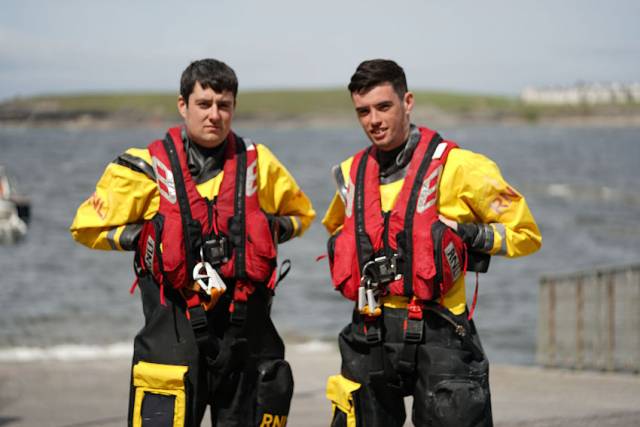Two recently recruited volunteer lifeboat crew at Bundoran RNLI have had a key part of their training funded by Lloyd’s Register Foundation, according to the lifesaving charity.
Brothers Oisin and Nathan Cassidy, from Kinlough in Co Leitrim, recently travelled to the RNLI College in Poole, Dorset, to complete its Crew Emergency Procedures course.
Oisin and Nathan were inspired to join up as volunteer crew by their father James, who has been a helm with Bundoran RNLI for 18 years.
The course sees new lifeboat volunteers being trained in a variety of scenarios, such as how to deal with fires aboard lifeboats, and how to ‘abandon ship’ in the event of an emergency — complete with a four-metre jump into water.
Others include team survival swimming, coping in a liferaft in simulated darkness, how to right a capsized inshore lifeboat, and the importance of lifejackets.
It also includes sessions on the correct use of flares, fire extinguishers and throw bags.
More than 3,000 RNLI volunteer crew members have received training funded by some €2.8 million
“It was inevitable that myself and Oisin would join the RNLI,” said Nathan. “Since an early age we’ve been around the lifeboat station with Dad and have seen the great work that he and all the other volunteers do week in, week out.
“We are both very proud to be part of crew at Bundoran RNLI and look forward to help save lives at sea in the Bundoran and Donegal Bay area.”
Nathan and Oisin’s training took place in the Sea Survival Centre at the RNLI College, where they was joined by other RNLI volunteer crew from around Ireland and the UK.
The training is funded by Lloyd’s Register Foundation, a charitable foundation that helps to protect life and property by supporting engineering-related education, public engagement and the application of research.
More than 3,000 RNLI volunteer crew members have received training funded by some €2.8 million from the foundation since 2008.































































